Holding A Grudge
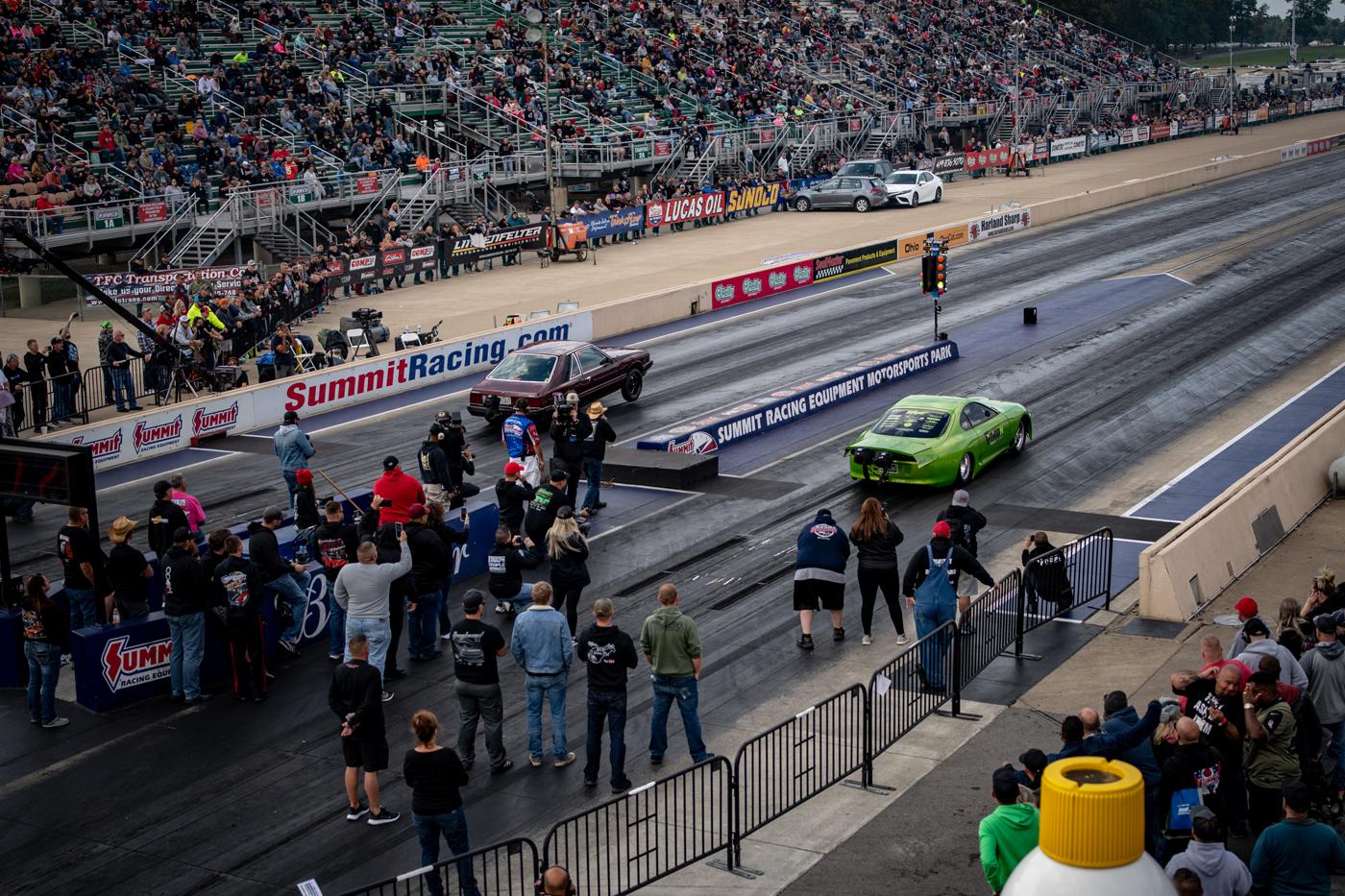
Grudge racing and its related “no time” events offer an outlaw spirit as well as a sense of community that can get lost in the pomp and circumstance of organized drag racing.
A vast array of subgenres has cropped up since the advent of drag racing, but it could be argued that the original concept continues in its purest form as grudge racing. Recent years have seen grudge racing itself splinter into niches like ‘no time’ and ‘no prep’ racing, but the core concept remains consistent: a straight-line competition between two vehicles with minimal preamble.
While larger, better-publicized drag racing events and series put on by sanctioning bodies like the NHRA kept the segment on the periphery for a time, recent years have seen a resurgence of interest in grudge racing. As Josh Robinson of Ohio Grudge Racing in Columbus, Ohio, explained, it’s not hard to understand why.
“It’s born out of what always made street racing appealing, but it’s the more legitimized events that started to crop up about seven or eight years ago that really gave it a push, especially the ‘no time’ stuff,” Robinson said. “Big egos, big money, lots of flash, and lots of heated negotiations and arguments between two camps. It eventually resulted in two racers lining up for a large sum of money. I’ve seen grudge races where there’s been as much as 60 or 70 thousand dollars on the line. That tends to create an exciting atmosphere.”
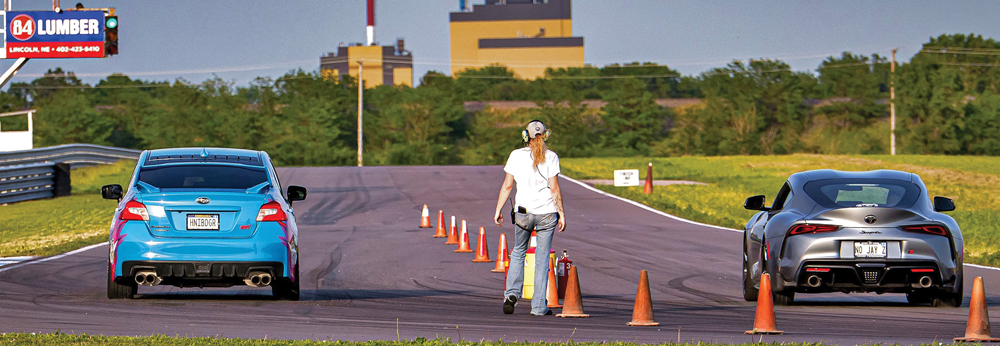
For decades, grudge racing’s inherently clandestine nature relegated this type of competition to word-of-mouth events held on backroads and side streets. But thanks to concerted efforts by promoters, organizers, and the racers themselves, these types of events have become a consistent draw at drag strips across the country.
Taking It To The Track
“There’s always been a niche for this type of racing, but for a long time it was pretty underground,” said small-tire drag racer Cory Clemens. “I think it really started to find a place in the racing world when Duck of Duck X Productions started including these types of races in his events in the early 2010s. Duck’s races were originally kind of a grudge type of vibe. That’s why those events were so big back in the day. There’d be 500 people at the starting line, betting and going nuts. He had all of that no-time stuff, and then he slowly started adding Radial vs. The World and Pro 275 stuff, going into a more polished kind of format.”
Clemens said that, as with many things in life, drag racing trends tend to be cyclical. “Like everything else, it starts on the street.
And when you really boil it all down, the money is a big factor. It’s all about how you can make the most profit out of what you’ve got. That’s part of the appeal of street racing. Eventually that scene is going to get out of hand, though, and folks are going to say, ‘OK, let’s take it to the track.’ But the traditional formats at the drag strip aren’t going to allow you to play your game if they’re showing your times. So those folks are going to organize events where the times aren’t being shown because there’s a demand for it. Suddenly you’ve now got no-time events at the track. But when the money starts shifting to other types of events, it takes a lot of those racers with it. Eventually it all kind of resets again.”
As Jimmy Owen of Carolina Dragway in Aiken, South Carolina, explained, the ‘outlaw’ mentality of grudge racing only adds to the allure. “It’s the same thing that drove us to do it back when we were teenagers. And you get these rivalries: Aiken versus Augusta, or North versus South, etc. They’re communities that kind of keep to themselves, but they’ll call out one another to pair up and settle things.”
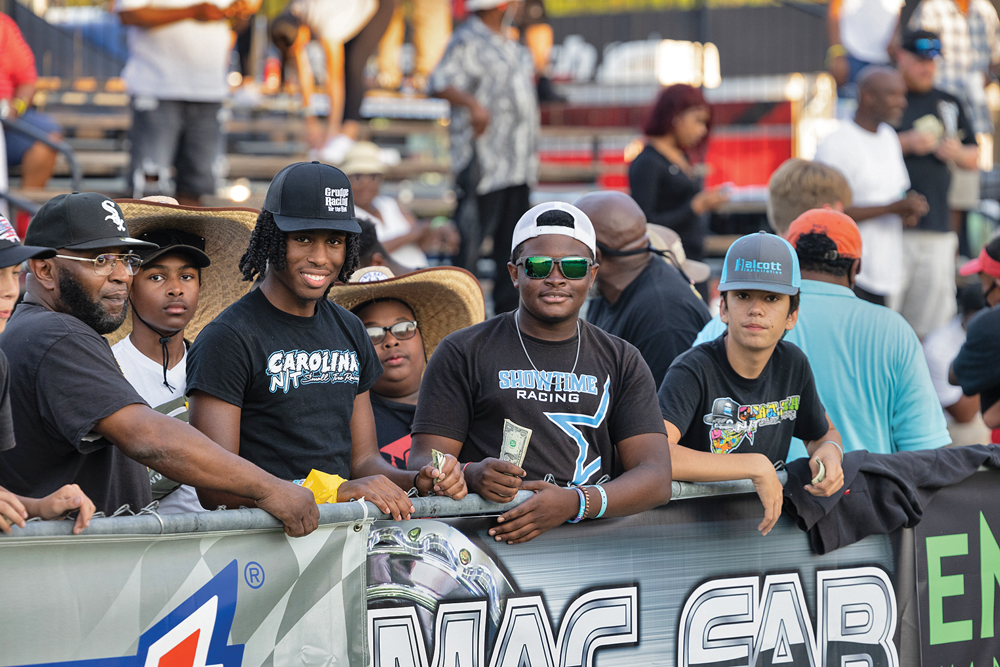
Perhaps the biggest factor that contributes a sense of excitement to grudge racing is the fact that the performance capability of the racers and cars involved can’t be easily quantified. “You can’t really tabulate what one racer can do against another if you don’t have times, and removing the ability to apply statistics really plays into it,” said Robinson. “Gambling is a huge part of the culture of no-time and grudge racing, and that just ratchets up the intensity both for the racers and the spectators.”
The simplicity of this type of drag racing also inherently sets a low barrier of entry for grassroots competitors. While racers in the upper echelons of grudge racing might be competing for tens of thousands of dollars in what are effectively purpose-built drag cars, the format also attracts those with mildly modified street machines who might be racing for a few hundred bucks—or just for the fun of it—at more exhibition-minded events.
“People are always looking for something to do with their car hobby, and grudge racing can provide an option that doesn’t require a big investment or a lot of hoops to jump through in order to get involved,” said Jeff Lacina of Motorsport Park Hastings in Hastings, Nebraska. “While we do see some folks bringing more purpose-built vehicles to some of our grudge racing events for shakedown and testing runs, but a vast majority of our grudge racers are people in street cars who’re looking to put them through their paces. Today’s cars are so good compared to what was available just 10 or so years ago, and many of our racers are looking for ways to enjoy all that performance in a safe environment. It’s very affordable and there’s no complex tech inspection. People will often come just to spectate and hang out, and then later decide to make some passes when their buddies show up.”
The recent rise of reality-style television shows like “Street Outlaws” has also elevated grudge racing’s visibility significantly. But when it comes to big money, one-off events like those organized by Big Jake Promotions in Carrollton, Texas, Clemens said that Facebook and other social media platforms tend to be the most effective way to get the word out. And the numbers involved tend to get the racers talking.
“Right now, Big Jake’s stuff is really getting a lot of attention because of the size of the pots that they’re putting on,” Clemens said. “No-time racing is still pretty underground—I didn’t even know about one of their events until someone sent me a flyer for it and asked if I was going. I think it’s like $30,000 for the Friday night race and $50,000 for the Saturday night race. So you could go home with 70 or 80 grand just from a couple of passes over a weekend.”
Fast and Faster
Weekly events like the grudge night races that are held at Motorsport Park Hastings and Carolina Dragway tend to attract the usual suspects—late model Ford Mustangs, Chevrolet Camaros, Dodge Challengers, and the like, many of which are outfitted with power adders like turbos and superchargers as well as DOT-legal drag radials. While these street machines are tamer than the tube-chassis cars that are typically seen at big-money events, it doesn’t necessarily mean that they’re slow.
“A lot of the younger generation that’s coming in now aren’t really focused on building something that’s basically a Pro Mod on steroids for grudge racing,” said Owen. “A lot of these late model muscle cars are getting to be 10 or 12 years old now, so they’re getting cheap enough to modify, and some of them are extremely fast. These kids don’t shy away from big stakes, either. There was a race not long ago between two Challenger Hellcats where they were holding $60,000 on the starting line for one run.”
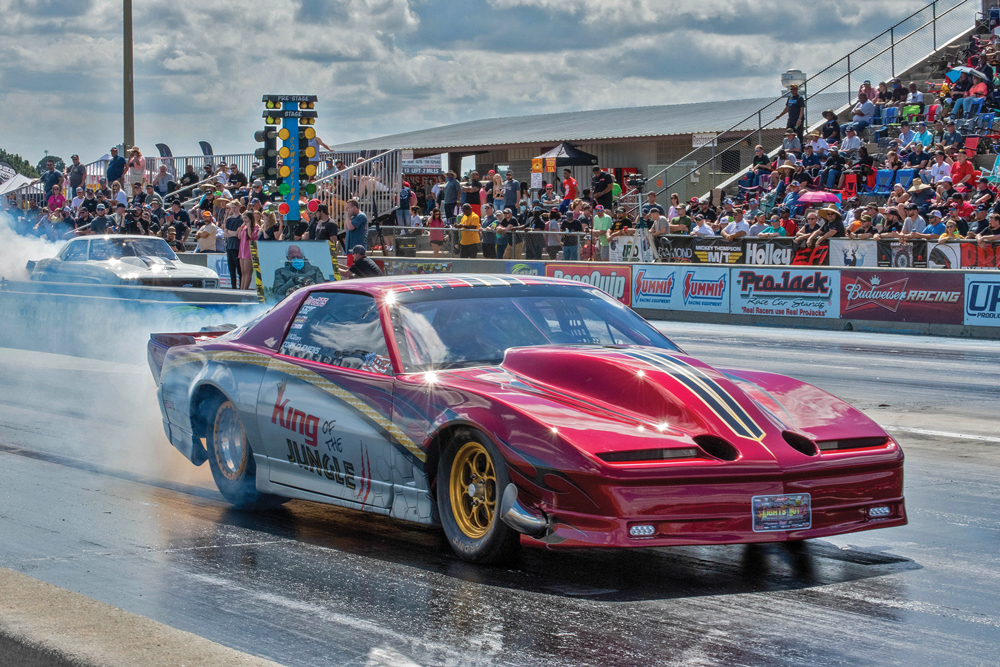
But there are also those who’re interested in taking their builds to more purpose-built levels. “We have guys who’re turning the latest Camaros into tube chassis cars with solid rear axles, but for the most part, the Fox-body Mustang platform is still really popular for competitors who’re racing at that level,” Owen continued. “Small blocks are common, and some of the more serious guys are using aftermarket blocks and heads, or having engines built professionally by shops like TRE Racing Engines. We see turbo setups and some ProChargers, but nitrous-fed combinations tend to be really popular around here. Nitrous is cheap, and perhaps more importantly, it’s much easier to hide than a turbo or supercharger setup. A lot of folks are more comfortable tuning those types of combinations.”
Clemens said that, although they may be underpinned by a tube chassis, all-steel, all-glass cars have always been popular in no-time racing. “Ten years ago, a big no-time combination might’ve been a Fox-body Mustang with spray on it and radials, but like everything else, the wildfire gets to it, and it just climbs and climbs. Next thing you know you’ve got full-blown, carbon fiber-bodied Pro Mods racing in no-time events. We’re seeing more of that now, but it’s definitely not every car that shows up. Most of what’s showing up is still steel-body tube chassis cars, and they’re staying competitive. We still see a lot of Fox bodies, and we’re actually seeing a trend of 1969 Camaros and other vintage muscle cars like that. I’m also seeing a lot more third-gen Camaros pop up, and I notice that because that’s what I run. They’re still relatively inexpensive, so that’s kind of a fad right now.”
He noted that while pretty much anything goes in terms of vehicle dimensions for many top-tier, no-time events—which lend themselves to those Pro Mod-style carbon bodies—the all-steel, all-glass classes tend to require stock vehicle dimensions even if there’s a tube chassis underpinning the factory-style bodywork. “I think that’s another reason this type of racing resonates with fans. These cars still look like the cars that you see driving down the road. I think that makes it more relatable,” Clemens added.
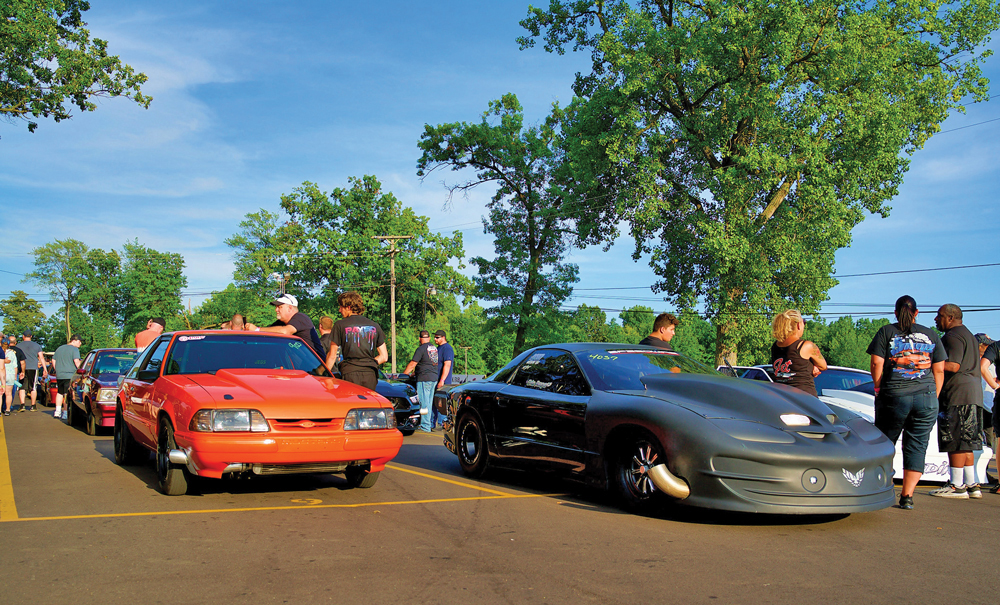
Much like the platforms, the engine combinations used at the top tier of no-time grudge racing have evolved significantly as well. “A few years ago it was about turbo LS combinations and small blocks with nitrous making about 1,500 hp,” Clemens said. “And there was a phase where everyone was running those twin-turbo 481X engines. But now, if you’re not bringing a twin-turbocharged, Alan Johnson-style Hemi, or some other kind of setup that can make 5,000 hp, you’re kind of behind the ball. While track conditions play into how much you can actually put down, it’s good to have the power for the back half.”
Outside of exhibition and test-and-tune events, the consensus is that the ongoing health of the grudge racing segment is largely tied to the purses that are up for grabs at these events. If that money shifts to no prep and other drag racing niches, top talent may also gravitate in that direction as they seek payouts that are in line with the level of investment involved, whether that’s at the track or somewhere else. The key, Owen said, is always being aware of the current temperature in the scene and taking a proactive role when needed.
“With true, ‘I’m calling out’ grudge racing, I think it’s really about knowing your customers—the guys who are coming to the track,” Owen explained. “We pay a lot of attention to social media so we can stay on top of what’s going on in that world. There are certain times of the year when it starts to get a little quiet, and when that happens, we get on the phone. We’ll call a couple of people and say, ‘Hey, let’s try to put something together—we’ll throw some money on top of whatever y’all come up with.’ You get that rolling, then you start marketing it, and it always generates more interest. You end up with four or five locked-in races for the night, and that’s what you sell your tickets on.”
SOURCES
Carolina Dragway
carolinadragway.com
Clemens Motorsports
clemensmotorsports.com
Motorsport Park Hastings
racemph.com
Ohio Grudge Racing
facebook.com/OhioGrudgeRacing/
 MEMBERSHIP LOGIN
MEMBERSHIP LOGIN JOIN PRI
JOIN PRI


